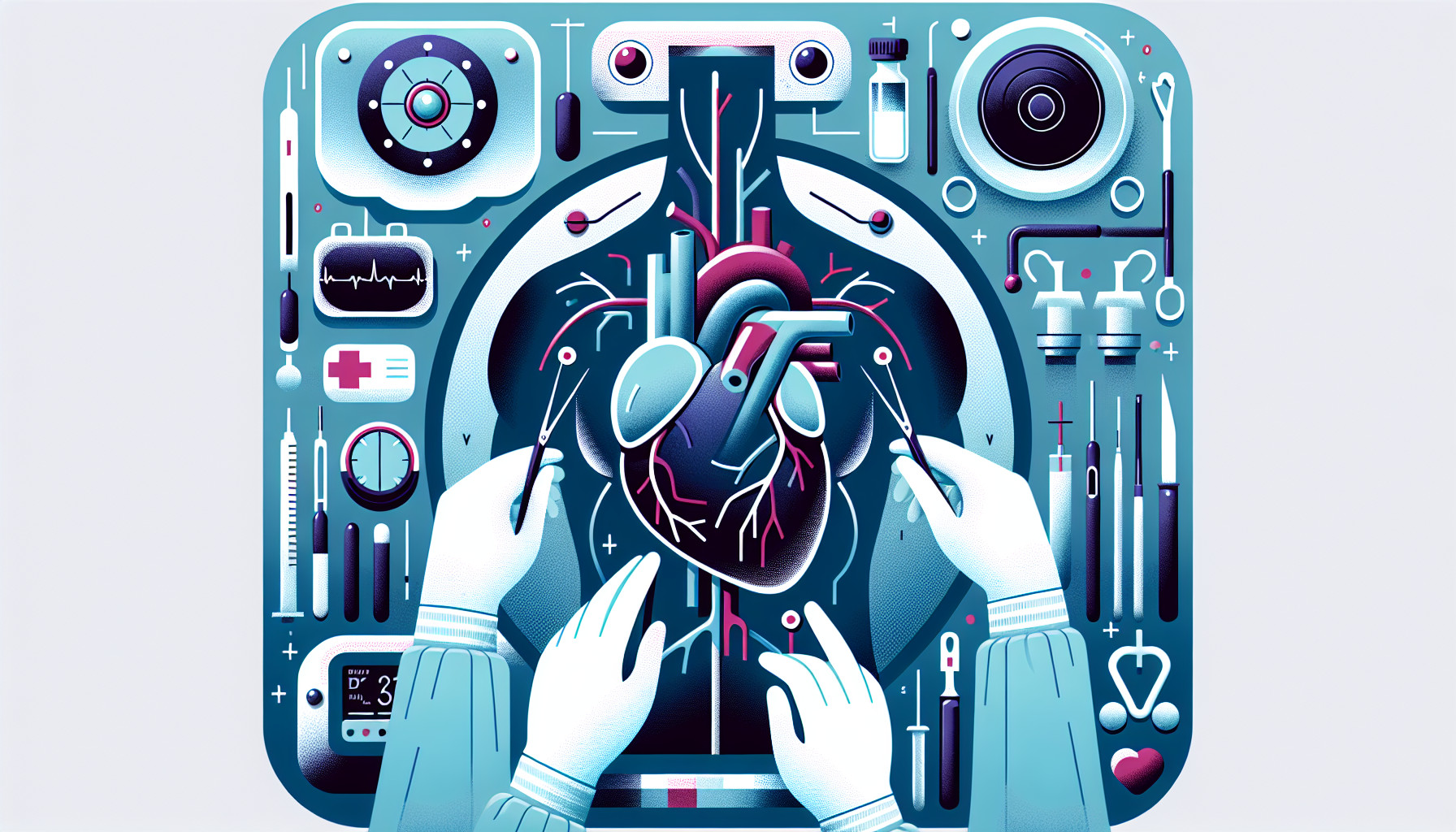Our Summary
This research paper looks at the safety and effectiveness of a certain approach to heart bypass surgery. It focuses on using both internal mammary arteries (blood vessels in the chest) for the operation. This method is taught from the first day of surgical training at the center where the study was conducted.
The research included all patients who had this type of heart bypass surgery at their institution between 2009 and 2021. The researchers divided the patients into two groups. The first group had their surgeries performed by fully trained staff surgeons, whereas the second group’s surgeries were carried out by trainee doctors under the supervision of a staff surgeon.
The study found that the patients in the first group were generally at a higher risk, and that the surgeries in the second group took longer and involved fewer bypasses. However, when looking at the outcomes 30 days after the operation, there were no significant differences between the two groups in terms of mortality, heart attack, stroke or acute kidney injury.
The researchers concluded that using both internal mammary arteries for heart bypass surgery can be safely and effectively done by trainee doctors under supervision. This is an important finding for the training and education of future heart surgeons.
FAQs
- What is the specific method of heart bypass surgery the research paper focuses on?
- How did the outcomes compare between heart bypass surgeries conducted by fully trained surgeons and those performed by trainee doctors?
- Based on the study, what were the conclusions about the safety and effectiveness of trainee doctors performing heart bypass surgery under supervision?
Doctor’s Tip
One helpful tip a doctor might tell a patient about coronary artery bypass surgery is to discuss with their surgeon the possibility of using both internal mammary arteries for the operation, as this approach has been shown to be safe and effective. It is important for patients to communicate with their healthcare team and ask questions about the surgical technique being used to ensure they are comfortable and informed about their procedure.
Suitable For
Coronary artery bypass surgery is typically recommended for patients with severe coronary artery disease, which is a condition where the blood vessels that supply blood to the heart become narrowed or blocked. Patients who may benefit from this procedure include those who have:
- Severe blockages in multiple coronary arteries
- Significant narrowing in the left main coronary artery
- Angina (chest pain) that is not controlled with medication or other treatments
- Left ventricular dysfunction (weakened heart muscle)
- History of heart attack or other heart-related issues
It is important for patients to undergo a thorough evaluation by a cardiologist or cardiac surgeon to determine if coronary artery bypass surgery is the most appropriate treatment option for their specific condition. The decision to undergo this procedure will depend on the severity of the coronary artery disease, overall health of the patient, and potential risks and benefits of the surgery.
Timeline
- Before coronary artery bypass surgery:
- Patient undergoes diagnostic tests such as angiography to determine the extent of blockages in the coronary arteries.
- Patient may be prescribed medications to manage symptoms and reduce the risk of complications.
- Patient may undergo lifestyle changes such as diet and exercise to improve heart health.
- Patient may receive education on the procedure and what to expect during and after surgery.
- During coronary artery bypass surgery:
- Patient is placed under general anesthesia.
- Surgeon makes an incision in the chest to access the heart.
- A portion of a healthy blood vessel, usually from the leg or chest, is used to bypass the blocked arteries.
- The bypass graft is attached to the coronary arteries to restore blood flow to the heart.
- Surgery typically takes several hours to complete.
- After coronary artery bypass surgery:
- Patient is monitored closely in the intensive care unit (ICU) for a period of time.
- Patient may stay in the hospital for several days to recover.
- Patient will be prescribed medications to manage pain, prevent infection, and reduce the risk of blood clots.
- Patient will undergo cardiac rehabilitation to improve heart health and recovery.
- Patient will have follow-up appointments with their healthcare provider to monitor their progress and make any necessary adjustments to their treatment plan.
What to Ask Your Doctor
- What is the success rate of using both internal mammary arteries for heart bypass surgery?
- What are the potential risks and complications associated with this type of surgery?
- How long is the recovery process after undergoing this type of heart bypass surgery?
- What are the differences in outcomes between surgeries performed by fully trained staff surgeons versus surgeries performed by trainee doctors under supervision?
- How will my specific medical history and condition impact the decision to use both internal mammary arteries for my heart bypass surgery?
- Are there any alternative treatment options for my specific heart condition?
- What is the expected lifespan of the bypass grafts using both internal mammary arteries compared to other types of grafts?
- Will I need to make any lifestyle changes or take medications after undergoing this type of heart bypass surgery?
- How often will I need to follow up with my doctor after the surgery?
- Are there any specific post-operative care instructions I should be aware of?
Reference
Authors: Knochenhauer T, Schneeberger Y, Beyer M, Sobik F, Hua X, Reiter B, Brickwedel J, Zipfel S, Reichenspurner H, Conradi L, Sill B, Schaefer A. Journal: Interdiscip Cardiovasc Thorac Surg. 2025 May 6;40(5):ivaf100. doi: 10.1093/icvts/ivaf100. PMID: 40279286
